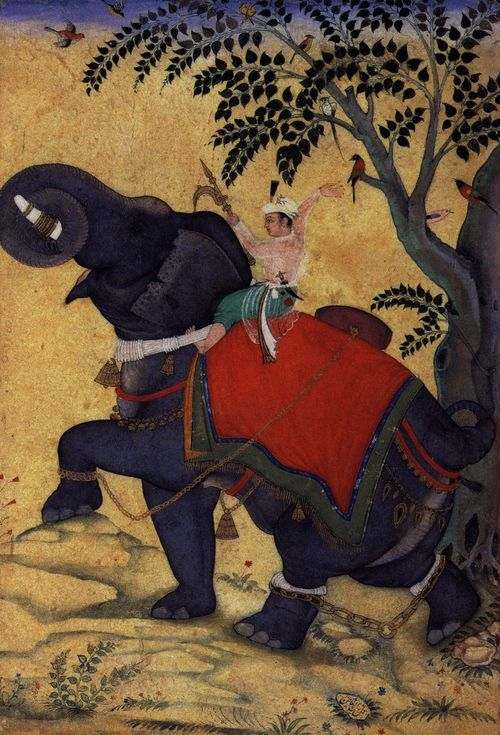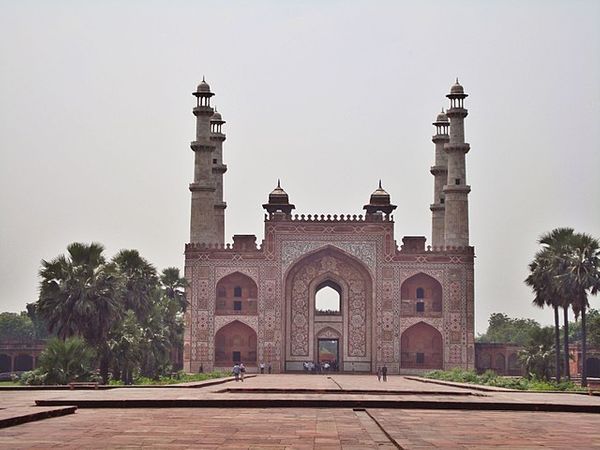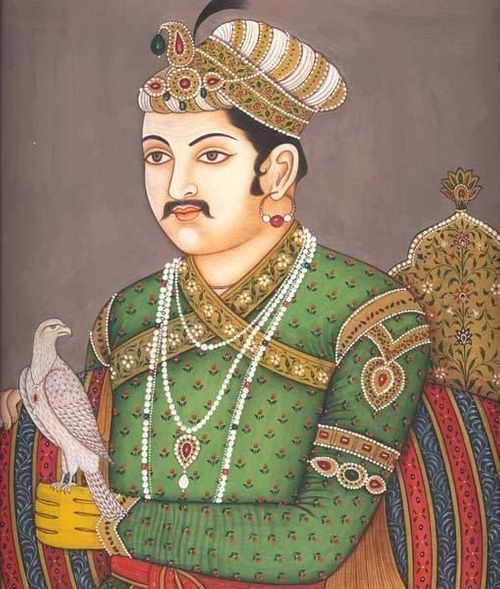The third Mughal Emperor Akbar or Akbar the Great is well known in Indian subcontinent for various reasons. From historians to rulers and learned men, almost everybody had something good to say about Akbar. After all despite coming from a staunch background, he laid the foundation of a multicultural empire.
Early Background
On 15 October 1542, the 4th day of Rajab 949 AH a child was born to Mughal Emperor Humayun and his wife Hamida Banu Begum (then only 15) at the Rajput Fortress of Umerkot in Sindh. The name of the child was Jalal-ud-din Muhammad who later became Mughal Emperor Akbar. When he was born, his parents were hiding and had been given refuge by the local Hindu ruler Rana Prasad.
Birth of Akbar
Since Humayun was on run, Akbar was brought up by his uncle Kamran Mirza and Askari Mirza and their wives in Kabul. He never learned to read and write and spent his early days in learning to hunt and fight, which made him a powerful warrior. However, his illiteracy never hindered his hunger for knowledge.
buy avapro online https://viagra4pleasurerx.com/avapro.html no prescription
Mughal Emperor Akbar – The 13 Year Old Shehenshah
Post the chaos in Sur dynasty over the succession of Islam Shah, Akbar’s father Humayun once again conquered Delhi in 1555. However, within a year Humayun died post he fell from stairs.
Bairam Khan – Akbar’s guardian concealed Humayun’s death to prepare Akbar’s succession. Finally on 14 February 1556, Akbar succeeded Humayun. The same time when they had to fight a war to reclaim the Mughal throne against Sikandar Shah. 13-year-old Akbar was enthroned by Bairam Khan in Kalanaur, Punjab. Akbar was proclaimed Shahanshah and Bairam Khan ruled on Akbar’s till the time he came of age.

The Initial Battles Fought By Akbar Under Bairam Khan
On 5 November 1556, Akbar’s army.led by Bairam Khan, defeated both Hemu (who proclamied him as Hindu king in North India) and the Sur army led by Sikander Shah Suri at the Second Battle of Panipat,
After the battle the Mughal forces reoccupied Delhi and Agra. With his victory, Akbar made a triumphant entry in Delhi and he stayed for a month. He then returned to Punjab with Bairam Khan to deal with Sikandar Shah who once again became active.
buy aygestin online https://viagra4pleasurerx.com/aygestin.html no prescription
In the coming six months, Akbar won another major battle against Sikandar Shah Suri, who now had fled to Bengal. Meanwhile, Akbar and his forces also seized Lahore and Multan in Punjab.
Next, Akbar took possession of Ajmer after the defeat Muslim ruler and even defeated the Sur forces who were controlling the Gwalior Fort, the greatest stronghold north of the Narmada river.
Mughal Emperor Akbar – Marriage, Wives, Sons and Daughters
When Humayun’s youngest brother, Hindal Mirza, died on 20 November 1551 fighting in a battle against Kamran Mirza, Humayun was overwhelmed with sorrow. Out of affection for his brother, Humayun then betrothed Ruqaiya Sultan Begum, Hindal’s 9 year old daughter to his son Akbar. When both turned 14, the marriage was solemnized in Jalandhar, Punjab. Thus Ruqaiya, the granddaughter of first Mughal Emperor Babur and niece of second Mughal Emperor Humayun became the first wife and chief consort of third Mughal Emperor Akbar. She was childless but later adopted Akbar’s grandson who went on to become the fourth Mughal Emperor Shah Jahan.
His second wife was his another cousin Salima Sultan Begum,the daughter of Gulrukh Begum also known as Gulrang (Babur’s daughter) and her husband Nur-ud-din Muhammad Mirza. She was first betrothed to Bairam Khan but after Bairam Khan’s death in 1561, Akbar married her. She died childless on 2 January 1613.
buy bactroban online https://viagra4pleasurerx.com/bactroban.html no prescription
Next, in 1562, Akbar married the daughter of Raja Bharmal, the ruler of Amber after he conveyed Akbar of the harassment of his brother-in-law Sharif-ud-din. Post this, Akbar insisted that the Raja should submit to him personally. Next, a condition was put forward that his daughter should be married to him as a sign of complete submission.
This is how Akbar married his first Rajput wife popularly known as Jodha. She gave Akbar his heir Prince Salim (the future Mughal emperor Jahangir). Akbar’s Commander in chief Raja Maan Singh was Jodha’s nephew. Besides, the first wife of Salim who died by consuming poison was Maan Singh’s sister and Jodha’s niece.
In all he had 14 wives including Raziya Begum, Qasima Banu Begum, Bibi Daulat Shad, daughter of Sham’s Chak, daughter of Qazi Isa, niece of Rai Kalyan Mal Rai, daughter of Rawal Har Rai, daughter of Abdullah Khan Mughal and others.
Besides, Hassan and Hussein who died in infancy, Akbar had 3 sons – Salim, Murad and Daniyal, and 5 daughters – Khannum Sultan, Shahzadi Meeti Begum, Mahi Begum, Shahzadi Shakir un-nisa Begum and Aram Banu.
The Expansion and the Conquest of Akbar
From Malwa to Gondwana fort, Akbar sent his forces to expand his empire in the northern India. Next, he concentrated his attention towards the Rajputana. While, he had already established his dominance in Amer, Nagor and Ajmer, his eye fell now in the heartland of Rajputana especially Mewar and Marwar. He captured Chittorgarh fort and Ranthambore fort eventually. He become powerful even in Rajputana and most of the Rajput kings submitted to him.
Maharana Pratap who vowed not to submit ever too became weak after the Battle of Haldighati. Though he constantly attacked Akbar he could never succeed.
Akbar could also easily defeat all the Afghan remnants in eastern and western India. He was also successful in curbing a revolt led by his own brother Mirza Hakim in Kabul and several kings in the Indus valley submitted to him including the King of Kashmir, Lahore, Srinagar, Baltistan, Ladakh, Quetta and Baluchistan.
The Death and Legacy of Mughal Emperor Akbar
Mughal Emperor Akbar fell ill on 3 October 1605 from dysentery and never recovered. He died on or about 27 October 1605. His body was buried at a mausoleum in Sikandra, Agra. During his rule, the state became liberal and secular with lot of emphasis on cultural integration. Interestingly, Mughal Emperor Akbar also introduced several social reforms, including raising the age of marriage, legalising widow remarriage and prohibiting sati.

Featured Image Source: Wikimedia Commons
Source and Reference:
Akbar, Emperor of India by Richard von Garbe at Project Gutenberg
The Timurid Genealogy
Henry Beveridge (Trans.) The Akbarnama of Ab-ul-Fazl Bibliotheca Indica Series
Smith, Vincent Arthur (1917). Akbar the Great Mogul, 1542–1605


